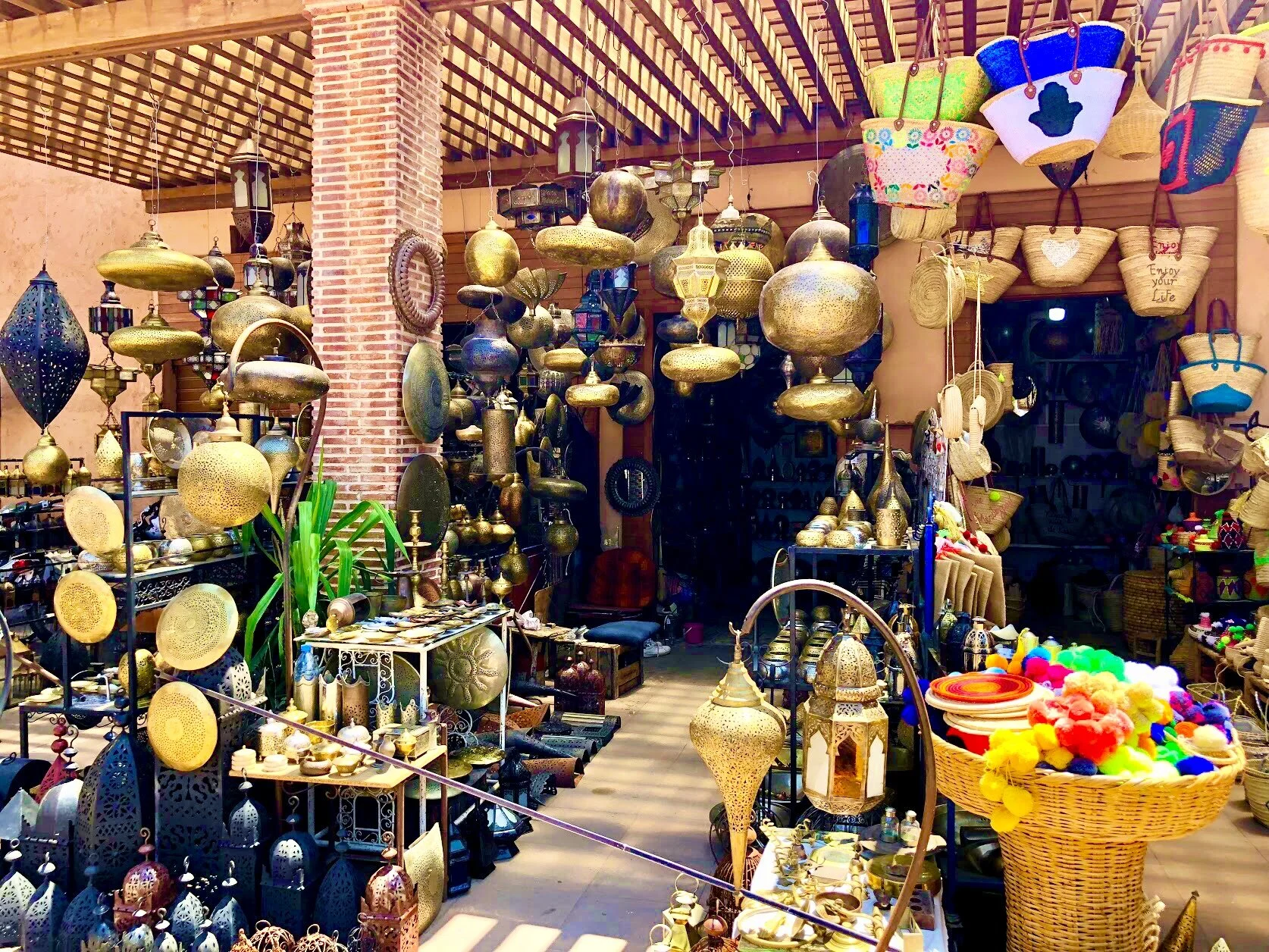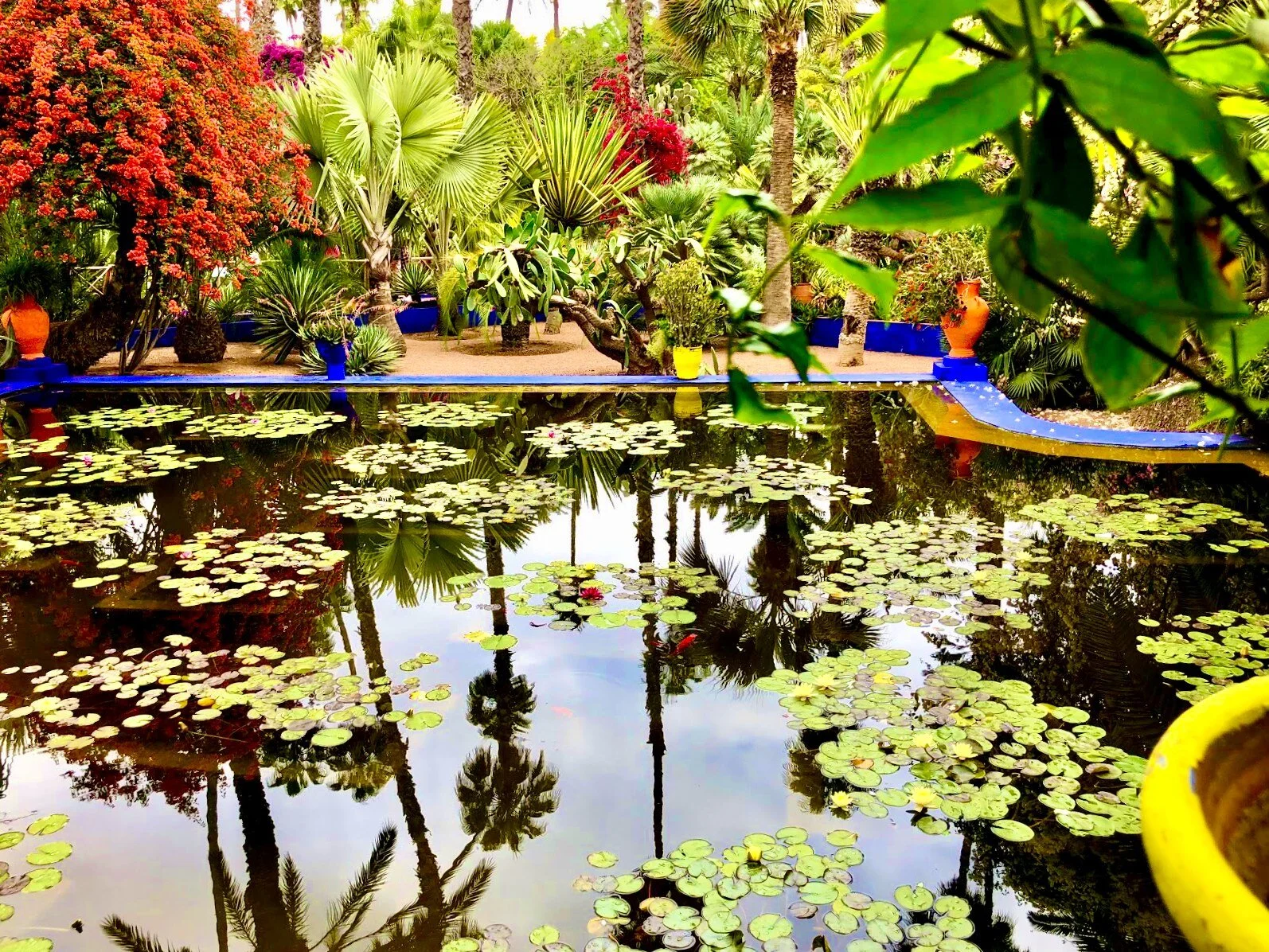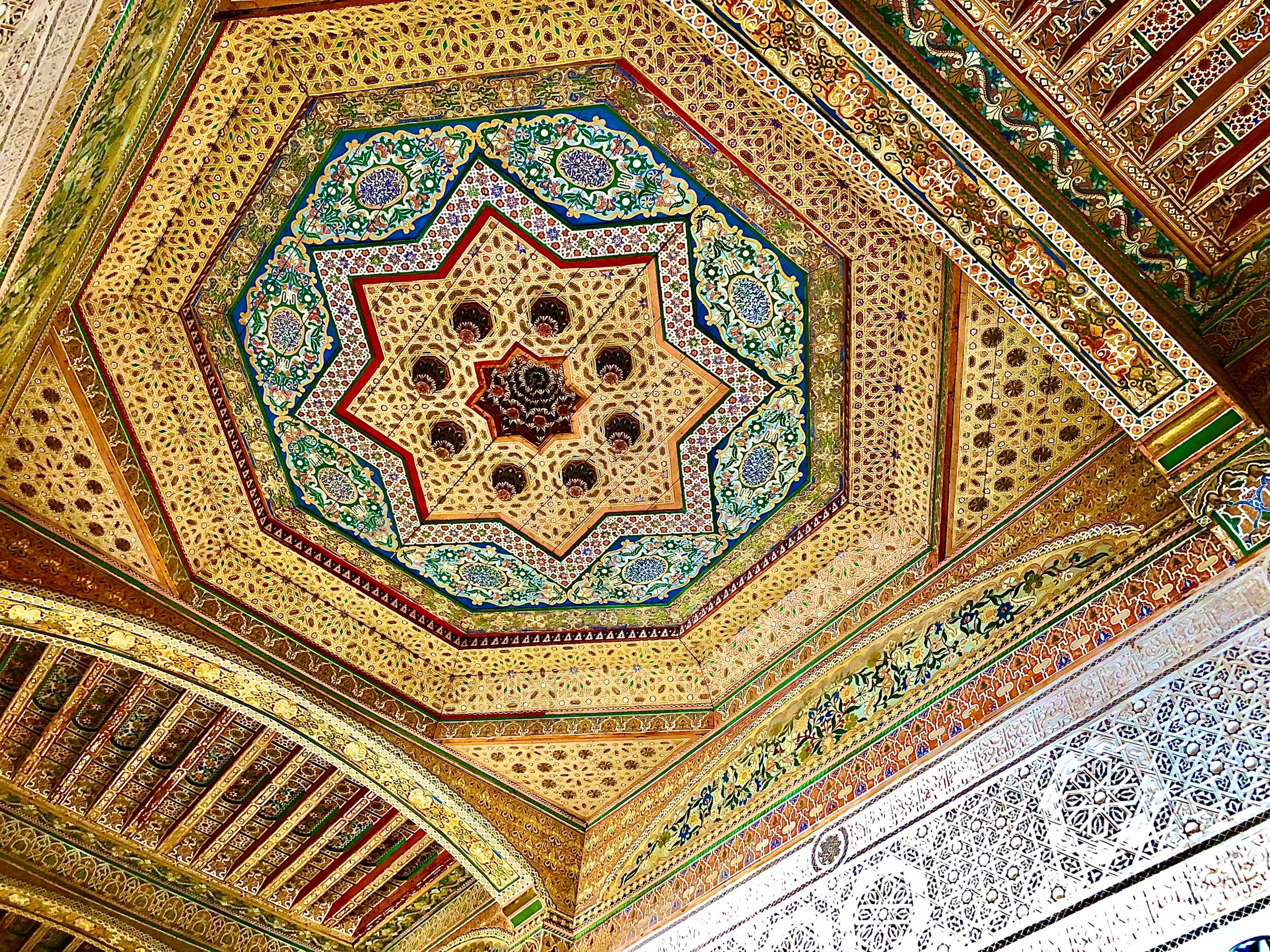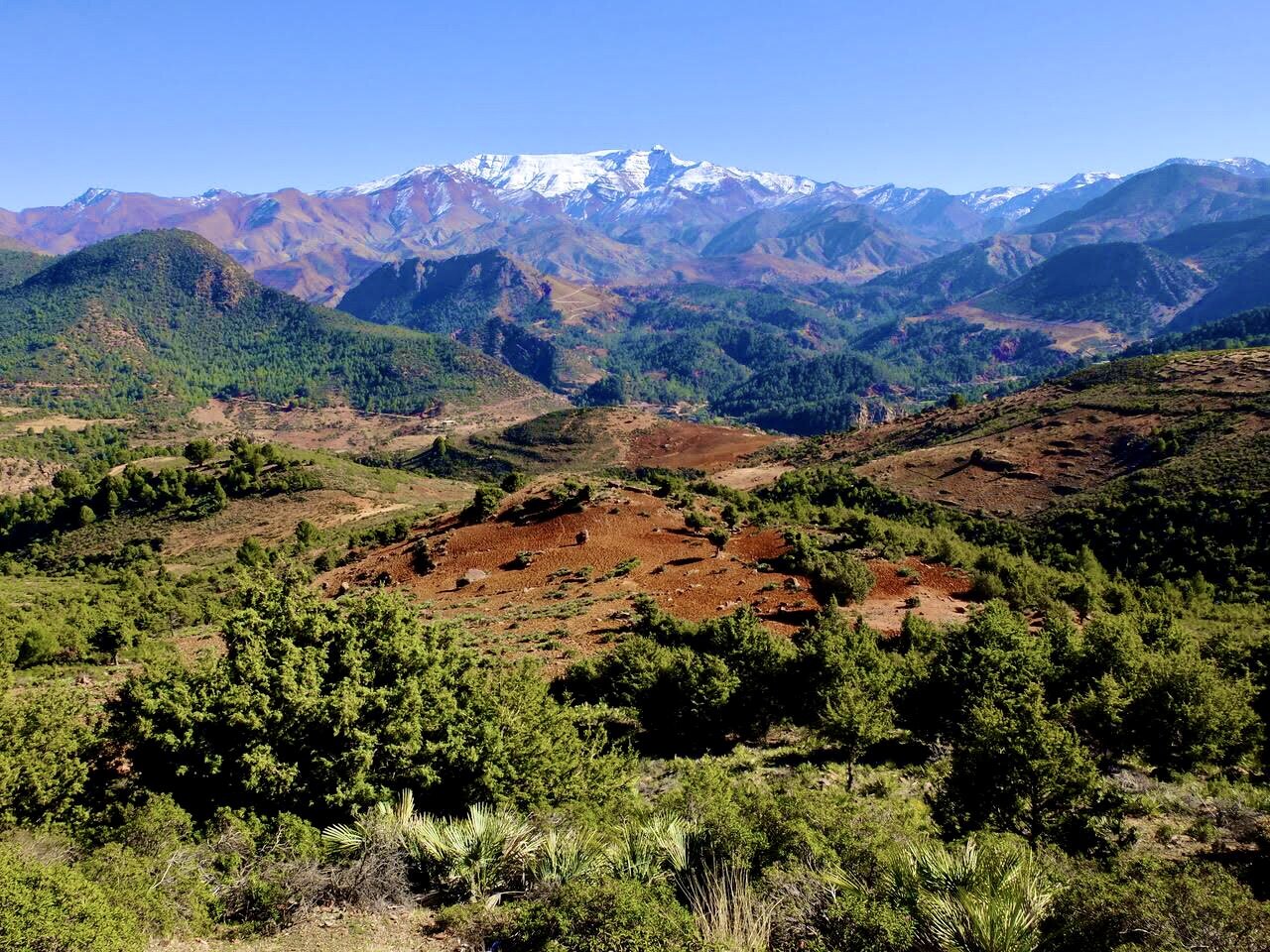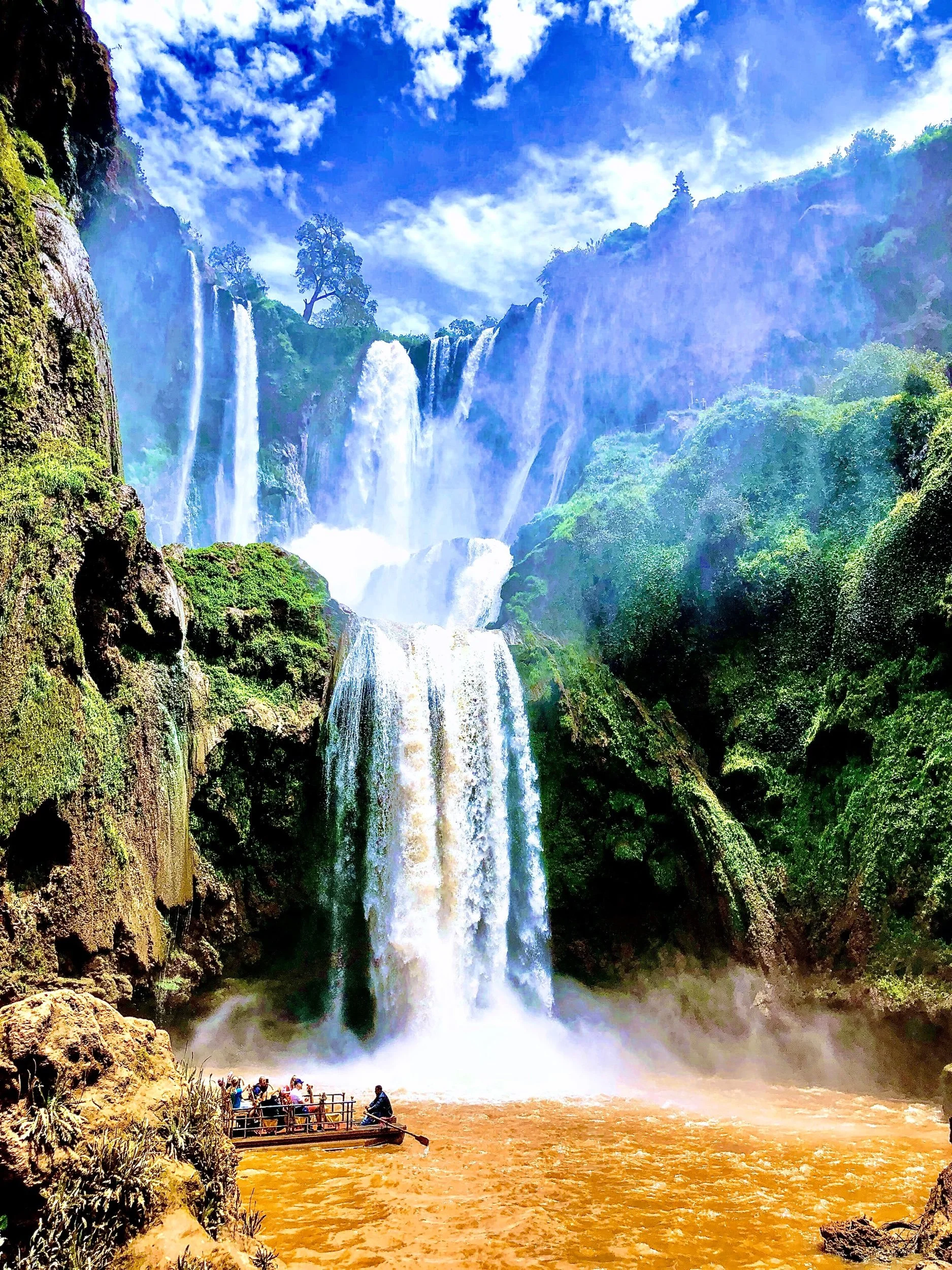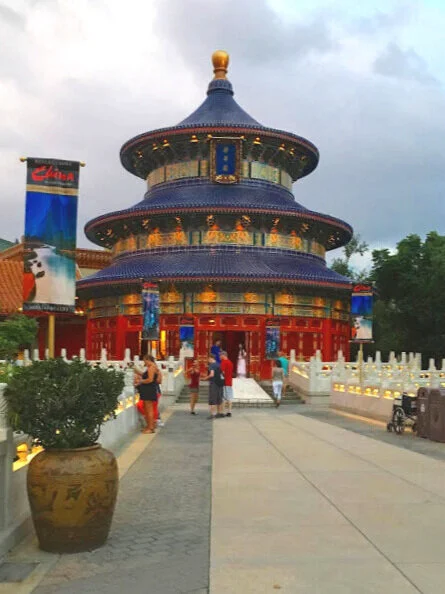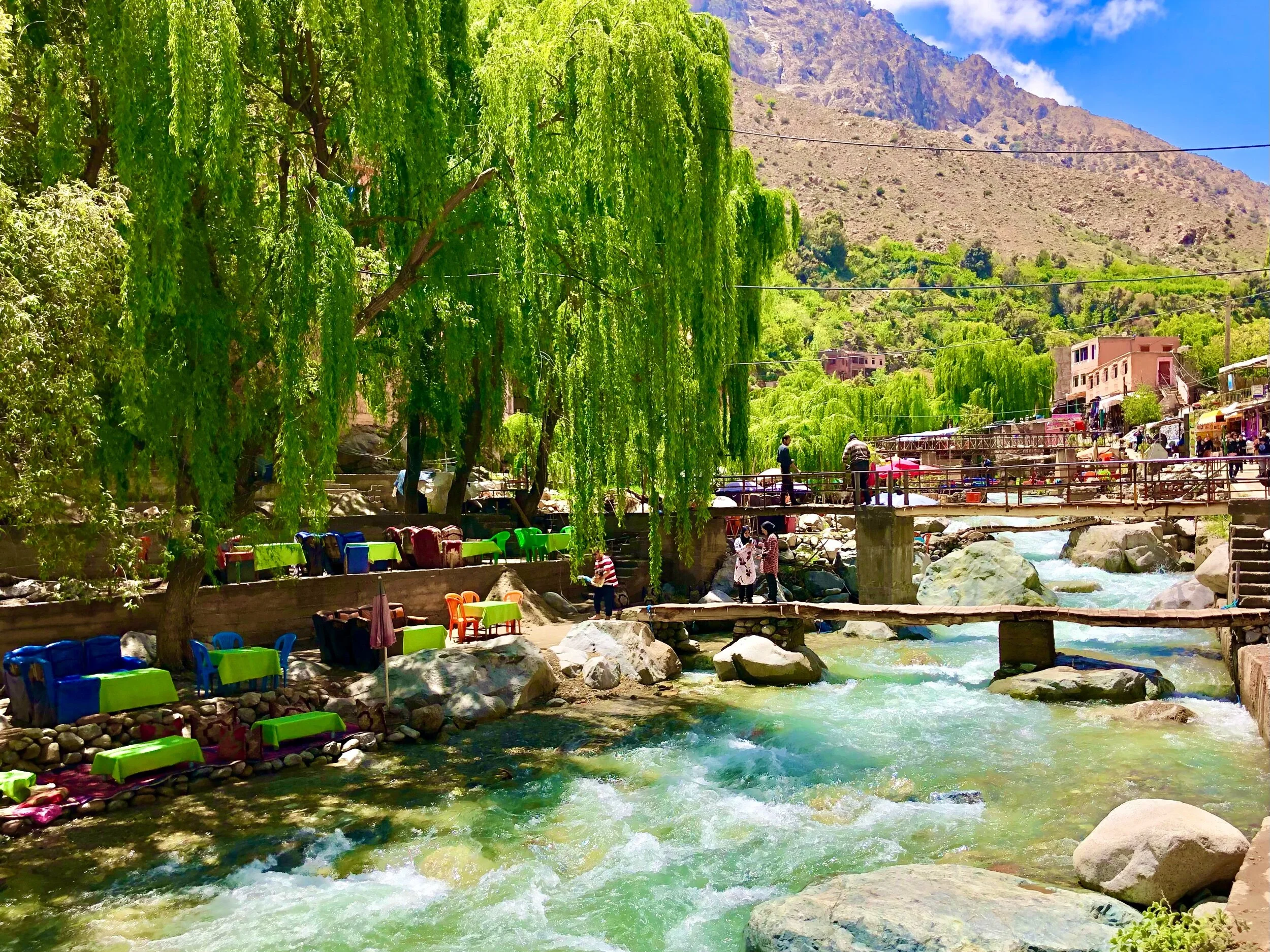The Red City of Marrakesh and its Amazing Excursions - Morocco
Please note: This post may contain affiliate links. See our disclosure to learn more.
A monkey sits near the exitway of the Ouzoud Waterfalls Day Trip overlooking the falls, Ouzoud, Morocco
Destinations > Africa > Morocco > The Red City of Marrakesh
More of Morocco: Eating on a Budget in Marrakesh | Ourika Valley Day Trip | Ouzoud Falls Day Trip
Located in Morocco, west of the Atlas Mountains is Marrakesh - one of the busiest cities in Africa. This “Red City” - aptly nicknamed because its houses, mosques and ramparts are crafted using red clay - historically provided protection to the largest traditional market in Morocco.
Today, the hundreds of multilingual craft vendors in this market make up a significant portion of the population. Service vendors - from food stalls to restaurants - use various spices to dominate cuisines, giving a different exotic flavor to clay-pot tagines, saffron chorbas, and - of course - the infamous couscous.
Marrakesh is intense in a number of ways, with its:
variety of smells - from sweet and spicy to argon oil and orange blossom,
variety of transportation methods - from cars and motorbikes to horse-drawn carriages and donkeys,
large crowded markets and shops - from tourist trinkets to ornate pottery and rugs,
regular “call to prayer” that fills the city - from loudspeakers - five times per day, and
overall hustle and bustle of how the people and traffic flow throughout.
This information rich, but concise, Moroccan Customs & Culture guide will prepare you best to handle this intensity before you arrive in Marrakesh - and it’ll give you a much deeper, immersive experience once your here. Without some understanding, Marrakesh can be a bit of a culture shock for many outsiders.
Luckily, there are plenty of hideaways amongst the tall palm tree covered streets where you can escape to a more relaxed and comforting atmosphere - such as having a peppermint tea in a quiet café, a fine dining experience at an intricately designed riad, a spa day at a traditional hammam, or a wander around the gardens at Jardin Majorelle.
While everyone who visits Marrakesh should experience the Medina and Jemaa el-Fnaa at least once, what makes Marrakesh so amazing is its proximity to so many other breathtaking and unforgettable experiences - such as the Ourika Valley, Ouzoud Falls, and the Atlas Mountains and Three Valleys.
If anything, Marrakesh is a city designed to host you while you explore the places outside of it.
Here is our list of attractions in Marrakesh - and day trips from Marrakesh - that simply cannot be missed:
The Best Things to do in Marrakesh, Morocco
A Souk at the Medina of Marrakesh
Medina of Marrakesh
Surrounded by 16 kilometers of pinkish clay ramparts and gates is the Medina of Marrakesh. It is an old Islamic capital that was first built in the 11th century. Wandering through the narrow streets and intertwining passageways of this UNESCO World Heritage Site, you will experience a variety of colors, scents, and sounds - with the occasional donkey cart passing by - one of the most memorable experiences in Marrakesh.
The Medina is a perfect place for shopaholics as it is the home to at least 18 different types of souks - where you can barter until your heart is content - including:
Babouche (shoe) Souks,
Chouari (carpenter's) Souks,
El-Attarine (perfume and spice) Souks,
and Cherratine (leather) Souks.
There are also plenty of great hotels for you to stay at in the Medina - such as La Mamounia and the Royal Mansour - which offer respite from the hustle and bustle of the Medina. Do keep in mind that activities can remain loud throughout the night in the Medina, especially on the weekends.
Snake charmers at Jemma el-Fnaa, Beware: Always ask price before photos!
Jemaa el-Fnaa
Jemma el-Fnaa is within the Marrakesh medina and is the main marketplace square. It exhibits a very strong representation of what the Moroccan culture is all about.
In the early mornings, you’ll find stalls offering fresh fruit and smoothies. As the day picks up more stalls open up and the snake charmers set up their umbrellas. Throughout the day there are many services that are being offered which includes Berber musicians (mazighen), Gnaoua dancers and senthir (hajouj) players.
During the night, the square becomes even more crowded - with performances from traditionally dressed “Chleuh dancing boys”, storytellers that tell Berber tales, and magicians performing their tricks! Do note that small donations are expected if you stop to watch or take photos.
After spending 2 years living in the Medina, Elizabeth Wix provides a much more detailed account of what to expect.
Travel Tip: The medina walls have signs painted or attached that point the way to Jemaa el-Fna. Do NOT follow the arrows. Sometimes one end of the street points one way, and then you get to the end of the street and the arrow points back the way you came. Just head toward the center of the medina or use the maps app on your smartphone.
Jardin Majorelle pond
Jardin Majorelle Gardens
One of the most enchanting spots in Marrakesh is Jardin Majorelle, a botanical garden that expands over 9000 square meters and is a tranquil oasis within the city. The garden was originally started in 1922 by a French painter named Jacques Majorelle. He worked on expanding the garden for almost 40 years, planting different exotic and botanical plants from all across the world.
It features various species of colorful flowers, marble pools, and the most prominent structure of the garden, the Majorelle Blue cubist Villa. However, the garden was then neglected for quite some time until it was then bought by fashion designers Yves Saint-Laurent and Pierre Berge who later worked to restore the garden to its glory.
Today, you can find over 300 species of plants - which include palm, banana, and coconut trees - and about 15 species of birds flocking around. The villa is also converted into a Berber Museum that houses a collection of Majorelle’s paintings. You can also find an Islamic Art Museum of Marrakesh and Musee Yves Saint-Laurent in the garden. Jardin Majorelle tickets will cost you around 100 Dirham per person, but there will be an additional charge if you wish to visit the museums as well.
Jardin Majorelle tickets need to be purchased at least 24 hours in advance so make your plans accordingly. We recommend going in the morning before it gets too hot, and having lunch with a cool beverage at Café Majorelle.
#FunFact: The ashes of Yves Saint-Laurent were scattered in this garden upon his request!
Bahia Palace Ceiling
Bahia Palace
Located in the Marrakesh Medina, this one-story labyrinth of a Palace, that spans nearly 2 hectares, was initially created in 1859 and expanded upon by its successors until 1900. Bahia, which means “brilliance” in Arabic, lives up to its name as the palace is well-known for its brilliant Moroccan-style decorative architecture and peacock color scheme.
It's most famous for its:
decorative horseshoe-arch doorway
Grand Courtyard - which has Italian Carrara marble floors surrounded by an elegant and colorful wooden gallery, while offering a beautiful view of the Palace surrounded by tall palm trees
Grand Hall - which has some of the best painted decoration in the palace,
impressive mosaic-tile fireplaces in the palace accompanied by colorful stained glass, and
many cedar-wood ceilings painted with colorful floral patterns.
It also has various smaller courtyards, beautiful lush riad gardens, and residences - 150 rooms in total, each decorated in a unique Moroccan style.
A visit to Bahia Palace is like stepping through time in Morocco, a visual journey showcasing the capabilities of Moroccan Artisanship from every area of the country. To learn the more intricate details of some of the more important features, grab a guide that can really complete your cultural experience here.
Koutoubia Mosque Gardens
Koutoubia Mosque
Koutoubia Mosque is also located in the Medina quarter of Marrakesh. Founded in 1147, the Koutoubia Mosque is the largest Mosque in Marrakesh. In Arabic, Koutoubia means “bookseller,” a name it acquired during a time when many booksellers set up near its entryways.
Its minaret has a height of 70 meters and, just like other buildings in Marrakesh, the mosque is rose-colored. Inside, the mosque is decorated beautifully with stunning Arabic calligraphy, unique Islamic motifs, and numerous ornamental details which include fountains, arches, and beautiful turquoise tiling. However, only Muslims are permitted to enter the mosque.
Everyone is free to walk around outside of the mosque to take photos or enjoy the lovely garden.
#FunFact: The Koutoubia Mosque is also the real-life inspiration for part of the Morocco Pavilion in Disney’s Epcot Theme Park!
Photo courtesy of Nick & Val Wheatley of WanderingWheatleys.com
Saadian Tombs
Another unique attraction that can be found in the Red City is the magnificent Saadian Tombs which are well known for its luxurious decoration. The first tomb was built by Sultan al-Ghalib Abdullah to contain the body of his father, Mohammad ash-Sheikh who was also the first leader of the Saadian dynasty.
Today, you can find two attractive mausoleums and a total of 66 tombs, built in between them, that contain the bodies of previous princes and other prominent figures of the city. The tombs are all decorated lavishly - imported materials, such as Italian marble, were used to build the mausoleums. The whole complex is filled with stunning Zellige tilework and beautifully carved columns and arches that will leave you amazed!
This location includes many Quranic inscriptions and over a hundred tombs. Getting a tour guide that can explain the meaning and details of the Saadian Tombs is the best way to fully appreciate this marvelous historical site.
Photo courtesy of Meandering Wild
El Badi Palace
Located on the outskirts of the Medina, El Badi Palace - often translated as the Incomparable Palace - was commissioned by Sultan Ahmad al-Mansur in the 16th century to celebrate the victory of a battle that was fought between three kings. To showcase the sultan’s wealth and power, the palace was decorated with imported materials and craftsmen were brought from various regions in the world to aid the construction.
It is said that the palace had about 350 rooms, an enormous pool, courtyard, and several beautiful gardens. Every one of the rooms was decorated lavishly with gold, Italian marble, and onyx as the main materials.
Sadly, after the decline of the Saadians, this palace was neglected and fell into ruins. Today the site is one that will require a skilled guide/storyteller and a vivid imagination to really appreciate the grandeur of what it was in its glory days.
Photo courtesy of Pauline from BeeLovedCity.com
Menara Gardens
Established in the 12th century is the Menara Gardens, a beautiful botanical garden west of the Medina. The garden was originally created as an orchard for the palm and olive trees. Today, you can find a massive artificial lake in the middle of the garden which was used to water the plants on the grounds.
The most prominent part of the garden is the pavilion with a green pyramid roof - it is believed that this is the exact location where Sultans met their companions!
Do keep in mind that the garden doesn't provide much shade - so be sure to wear a hat or bring an umbrella - especially around midday. We recommend visiting Menara Gardens early in the morning or late afternoon.
Berber women work at extracting argan oil from Argan nuts - which grow only in morocco.
The Amazing Excursions from Marrakesh
It might seem counterproductive to leave Marrakesh if you really want to explore the city, but Marrakesh is not just famous for the places inside the city. It is equally as famous for the things you can do that are in close proximity to the city.
OUR STORY: A Marrakesh local advised us that we would want book a few day trips outside of the city after a few days. She was right. While the hustle and bustle of the medina, and the architecture of the buildings that reminded us of Star Wars was fascinating, getting out to see the Atlas Mountains and more of the countryside were our favorite parts of the area.
No journey to Marrakesh is complete without at least adding a few excursions - and once you’ve done them you’ll highly agree! Here are some of the best:
Ouzoud Waterfalls
Ouzoud Falls Day Trip
Who would’ve thought that Morocco is home to such an impressive countryside? Surrounded by beautiful landscapes, you can also find the stunning 110-metres high Ouzoud Waterfalls there! From Marrakesh, the journey to the tallest waterfalls in North Africa takes about 2 to 3 hours.
The full day tour to Ouzoud waterfalls is a great long day escape from the busy city of Marrakesh. The walk up to the falls is very enjoyable surrounded by olive trees. If you hike to the bottom of the valley, there are boats that will take you to get an up close look of these impressive waterfalls. You’ll also have the opportunity to interact with some Barbary apes, and have some traditional tagine with an amazing view.
For more details and tips, check out our full review of the Ouzoud Falls day trip here.
Photo courtesy of Caroline Keyzor of CKTravels.com
Sunset Camel Ride in the Palm Grove
For a unique nomad experience in Marrakesh, you’ll want to get on a camel and enjoy the jaw-dropping view of the tall palm trees accompanied by the orange skies and sunset-washed sands.
Before continuing your journey on the back of a camel, stop by and have a cup of refreshing Moroccan mint tea with a Berber family at their traditional house! Relax and talk about their culture, lives, and history.
Photo Courtesy of Dream Big, Travel Far
Agafay Desert Trip
Take a car ride, walk, or ride the camels through the Agafay Desert with the Atlas mountains as your backdrop!
You can also visit the Berber tribes and have some Moroccan snacks and tea with them. This is your opportunity to get out of the city and experience local culture and hospitality.
Don’t forget to drop by the lake of Lalla Takerkoust and absorb the spectacular view of the mountains backdroping the little clay villages.
Ourika Valley river at the base of the trail
Ourika Valley Day Trip
One of the most popular excursions in Marrakesh is the Ourika Valley full day trip. On this trip you will follow the trails of the Berber on a journey through the western slopes of the High Atlas Mountains, while passing through a few Berber villages and markets.
Some parts along the trail are a little bit of a challenge, but the guide will help you at each of them as you cross the mountain stream - on log bridges and stepping stones - on your hike up to the waterfalls of Setti Fatma.
After the hike, feel free to reward yourself with a plate of delicious Berber Tagine while sitting by the streams.
For more details and tips, check out our full review of the Ourika Valley day trip here.
Photo courtesy of Ph.Valentina Borghi of BeBorghi.com
Atlas Mountains, Three Valleys and Waterfalls
Visit the Atlas Mountains and view Toubkal, the highest peak in North Africa, which reaches 4,167 meters (13,671 ft) in height. The road to the mountains zigzags and was used in one of the Mission Impossible movies.
You’ll also get a chance to ride the camels and visit the quaint Berber villages! Have a meal with them while learning about their lives, history, and culture before walking up to the waterfalls and feasting your eyes with the stunning view of mother nature.
Night at Jemaa el-Fnaa, Marrakesh, Morocco
Absolute Must See Places in Marrakesh
Marrakesh is full of life with plenty to see and do. You could spend most of your time wandering around the red gates, visiting palaces and museums or book a trip and journey to the Moroccan countryside on the back of a camel. Wander around the dunes, enjoy the sunset with the view of the Atlas Mountains in the horizon, and end the day with a refreshing cup of mint tea.
With so much to choose from, here are our absolute must-see places that need to be on every itinerary:
Jemma el-Fnaa – to experience the liveliness and energy of the Medina,
Jardin Majorelle – to see the exotic plants and colorful buildings within the Red City,
Ouzoud Waterfalls Day Trip – the jaw-dropping falls are not to be missed, and
Ourika Valley Day Trip – the views are simply breathtaking.
FAQ’s
What cultural etiquette should visitors be aware of when exploring the old city of Marrakesh?
Marrakesh, with its rich cultural tapestry, has etiquette that visitors should respect. Dress modestly, covering shoulders and knees, especially when visiting mosques and traditional neighborhoods. Greetings are important; a simple "Salam Alikom" can go a long way. Haggling in souks is expected, but do so respectfully. Public displays of affection are frowned upon. Always ask permission before taking photos of people, as some may find it offensive or may request payment.
How can travelers ensure their safety while enjoying the night markets and excursions in Marrakesh?
Safety in Marrakesh's night markets and excursions involves being vigilant. Stick to well-lit, populated areas and be wary of pickpockets. It's advisable to explore in groups and avoid carrying large sums of cash or flaunting valuables. Learn a few phrases in Arabic or French to navigate or seek help. For excursions, book through reputable agencies, check reviews, and ensure clear communication about the itinerary and costs.
What unique souvenirs can visitors bring back from their trip to Marrakesh to remember their experience?
Marrakesh offers unique souvenirs that capture the essence of the city. Traditional Moroccan slippers, known as babouches, are a colorful and practical memento. Argan oil products, native to Morocco, are sought after for their cosmetic benefits. Lanterns and lamps with intricate designs reflect the local craftsmanship. Spices like saffron and ras el hanout provide a taste of Moroccan cuisine. Handwoven Berber rugs or blankets can add a touch of Marrakesh to any home..
(1) Marrakesh travel - Lonely Planet | Morocco, Africa. https://www.lonelyplanet.com/morocco/marrakesh.
(2) 11 Best Things To Do in Marrakech, Morocco · Salt in our Hair. https://www.saltinourhair.com/morocco/marrakech-guide/.
(3) 14 Must-Visit Attractions In Marrakech - Culture Trip. https://theculturetrip.com/africa/morocco/articles/20-unmissable-attractions-in-marrakech.
Ourika Valley Waterfall
Ryad Monceau sunset dinner - medina area
Thank you VERY much for reading our article. We actually created this website to help people reach financial independence. Did you know that by having a remote job and traveling endlessly, or living in a country that has low costs of living, you can actually reach retirement quicker? Plus, retirement abroad is up to 75 percent cheaper as well! Learn more by exploring our website: EatWanderExplore and REmotiFIRE.
See our Thank You page to sign up for our free weekly newsletter - you’ll receive only 1 email per week letting you know about our latest travel articles, remote-work life, and amazingly affordable destinations!
Found this post useful? Buy us a coffee to help support this site’s running costs OR share this article with a friend.




